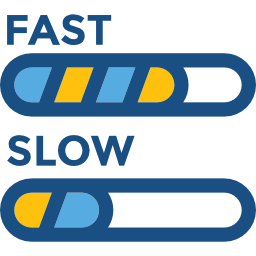If you are concerned about your motor vehicle, you’ve come to the right web site, and yes, through this web page we plan to support you in dealing with the little problems that your Ford Escape can cause you. We will now check out your Ford Escape that doesn’t idle properly , which can be almost invisible and sometimes signify the failure of necessary parts, but it is not a issue that can go undetected. It is consequently very necessary that you pay attention to it and you did the right thing in starting to look for a solution to the problem. To answer this question, we will first look at some of the points to look at for an Ford Escape that doesn’t idle and at last, some elements that may be to blame for your Ford Escape that doesn’t idle.

Ford Escape THAT WON’T Idle properly: RISKS AND THE PRELIMINARY INSPECTIONS TO BE PERFORMED
First of all, it is necessary to know that your Ford Escape iddle is not holding effectively , if it is disturbed you will risk prematurely damaging parts of your motor vehicle. Generally, it is expected that the idle speed of your Ford Escape should be between 750 and 900 rpm. If your Ford Escape does not idle, or if your idle speed is unstable, this can be noticed by moderate variations in the idle speed of your Ford Escape from 100 rpm up to the engine idle speed.
We will now take a closer look at the checkpoints that need to be inspected to get an idea of the trigger of your Ford Escape not holding idle:
- Electronic Issue: Whether it is an ECU or sensor issue, you may have an engine problem in your ECU, inspect it with a diagnostic tool and if it is the case, focus on the electrical malfunction, it could be that your Ford Escape is not idling and is brought on by one of these problems.
- Exhaust analysis: If you notice black smoke, it should be a sign of a combustion or intake issue. If you detect white fumes, it’s probably due to water inside your cylinders, be careful with your cylinder head gasket!
- Engine block examination: Make sure you have a good look at all the hoses of your Ford Escape, your electrical connectors, your sensors, a very easy hole in a hose or a disconnected cable can be the trigger of your concerns.
Ford Escape THAT WON’T IDLE: THE COMPONENTS THAT CAN CAUSE IT
In this section, we will now talk about the parts that can make your Ford Escape go into slow motion. First we’ll look into the worries of electric origin, and then on those associated with the admission of your Ford Escape.
Ford Escape IDLING UNSTABLE CAUSED BY ELECTRICAL MALFUNCTION
- One of the most general reasons that your Ford Escape will not idle is if one of your sensors is damaged, dirty or simply has a bad connection to the power supply. On this website is a list of the most important things you should look at if you have ever had a fault displayed on your ECU. Verify the temperature sensor, your air flow meter and the lambda sensors (2 in total).
- Sensor hassle: Just as with sensors, it’s more than likely that a very easy defective sensor is the origin of your idle that doesn’t fit on the Ford Escape. Therefore, verify the camshaft sensor and the top dead center sensor.
- ECU trouble: Finally, your ECU may be the trigger of your problems with your Ford Escape. It can be due to an electrical malfunction or a software issue, in any case go to your garage for a reprogramming or a verify of the connections.
- Check your alternator which, if it is weak, can be the trigger of the issue.
Ford Escape SLOWED DOWN UNSTABLE CAUSED BY INTAKE
Finally, here are the possible causes of your Ford Escape not keeping up when idle caused by an intake issue.
- Fuel Intake Issue: Your fuel injection pump or injectors may be clogged. As well verify your pressure sensors which are common causes of this kind of issue on the Ford Escape.
- Throttle body issue: Nevertheless generally found on gasoline engines, the throttle body can be the trigger of an Ford Escape not holding idle, try to check out it.
To discover more tips on the Ford Escape, take a look at the Ford Escape category.

